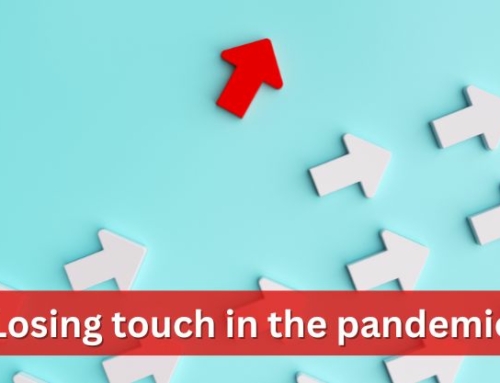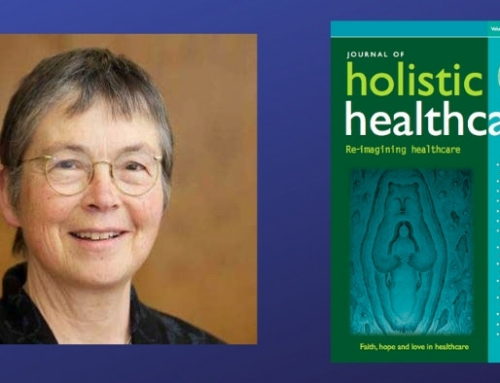Diagnosis: are we medicalising human experience?
Written by Vinay Mandagere, Medical Student at the University of Bristol
Medicalisation is described as the process of taking non-medical problems and converting them into illnesses and disorders (Conrad and Schneider 2010). Peter Conrad divides this into conceptual and interactional medicalisation. Conceptual is merely a change in language whereas interactional is where a social problem is turned into a medical one (Maturo 2012). This essay has two main aims: to discuss how diagnosis affects patients’ lives and how human experience has been engulfed by medical lexicon and nosology.
Mental health
They only give you that because they can’t put you into a tick box… [it’s] easier for them to give you a personality disorder (Health Talk Online 2016a)
Ugo’s diagnosis with personality disorder is caused by childhood trauma, as well as having six miscarriages. She later lost her husband and home and often resorts to self-harm. The medications she has been prescribed give her various side-effects. Ugo’s description of her diagnosis with a personality disorder frustrated and isolated her because her illness was described as ‘miscellaneous’. She feels that she is not being understood and lacks motivation to undergo daily activities. Moreover, her being labelled as ‘mentally ill’ resulted in her being stigmatised and seen as a danger to others. As a result, she was barred from her church when she needed it most.
This example illustrates how the interactional medicalisation of her problems has failed her as she neither understands nor manages her illness. Furthermore, it emphasises how the vagueness of psychiatric classification can leave patients feeling confused. In discussion, Ugo described how more community-based services could help her vent her feelings and exchange ideas from others in BME circles. This shows how she did not need pharmacological intervention but rather the support of people who could listen to her. Ugo needed compassion and kindness.
The medicalisation of mental illness has resulted in ambiguous classification and over-prescription. In the DSM-III, diagnosis of major depressive disorder (MDD) is characterised by nine symptoms: ‘mood, interest, activity, fatigue, weight/appetite, sleep, guilt,
concentration and suicidality’ (American Psychiatric Association 1980). The combination of these characteristics define the severity of the disorder. Not only have these diagnostic parameters remained the same since 1980, but the latest DSM-5 broadens the definition, allowing diagnosis after two weeks of bereavement (Dowrick and Frances 2013). The defined symptoms of MDD are extremely vague and could be confused with temporary sadness, which is a normal human experience. In addition, redefining clinical depression as a part of bereavement expresses how normal feelings following loss have started to be included in psychiatric classification.
Often, the end result is over-prescription. Antidepressant prescribing increased at over 10% each year between 1998 and 2010 (Ilyas and Moncrieff 2012). With wider classification models from the DSM-5, this could increase even further. Meta-analyses show little evidence in the benefit of these drugs (Kirsch et al 2008, Fournier et al 2010, Khin et al 2011, Barbui et al 2011). In addition, the side effects of these drugs can have a huge detrimental effect on the patient’s psyche. Rachel, a 51-year-old mother is unable to work because of her depression and she describes her side effects as follows: ‘I feel like the version of me on medication isn’t ‘me’. It isn’t the “me” I want, I want to be, because it shaves too many bits off you’ (Health Talk Online 2016b).
Ageing and the pharmaceutical industry
Ageing is a natural process of life, yet experiences such as baldness or erectile dysfunction have been seen as a problem to be treated. With the introduction of Viagra in 1998, medicalisation has brought forth greater expectations of masculinity for male patients.
Hence, we can see the effects of medicalisation on a societal and individual level. Pharmaceutical intervention for baldness and erectile dysfunction has penetrated the cultural perspective of the body. This is exemplified in an advertisement in Australia, where false statistics were shown in order to push men into seeking medical help for erectile dysfunction. The advertisement claimed that 39% of men who visit their primary care doctor have erectile dysfunction, yet it did not mention that this was massively dependent on age and varied in how often patients reported their problem. This ‘disease-mongering’ of the media can cause anxiety and lack of self-esteem for many patients (Moynihan et al 2002).
The advertisement for erectile dysfunction was later found out to be funded by Pfizer. Medicalisation is often driven by the corporate greed of pharmaceutical companies. After the approval of the drug Paxil for social anxiety disorder in 1999, GlaxoSmithKline developed a multitude of marketing plots to raise awareness about the interventions they had generated. The product designer of Paxil, Barry Brand even said ‘Every marketer’s dream is to find an unidentified or unknown market and develop it. That’s what we were able to do with social anxiety disorder’ (Conrad and Schneider 2010). This brings forth the idea that the industry sponsors sickness by picking out abnormalities and encouraging society to see itself as morbid.
Medically unexplained symptoms (MUS)
In primary care, many patients seek advice for unexplained chronic pain, irritable bowel syndrome (IBS) or chronic fatigue. These are known as medically unexplained symptoms (MUS), which have been classified by medical specialties for diagnostic ease. There is a lot of evidence showing the psychosocial etiology of these symptoms: a combination of difficult upbringings, abuse, relationship problems, domestic violence, financial problems or stress. The physical symptom manifestation often brings patients to believe that they require medical attention.
General practice is an extremely time-pressured environment, and with MUS it is often the case that there is a lack of resources to signpost patients to mentoring or intensive therapy services. Furthermore, the reluctance of patients to engage with more long-term therapies often results in antidepressant prescription, ie ‘a quick fix’. Primary care doctors often see high-flying professionals who complain of stress due to high expectation and busy schedules. Often the short-term solution is pharmacological intervention. This demonstrates how generic stress-related problems are becoming medicalised as a result of a pressurised system. A shift in culture from short-term prescribing to long-term prevention could decrease medicalisation of stress and foster healthier attitudes.
Turning medicalisation into holism
Throughout this essay and in the vast amount of literature, medicalisation is a pejorative term. However, it could be argued that the medicalisation of human experience is indeed beneficial in helping the way we approach problems in society. The process of diagnosis is merely the first step. What follows diagnosis is the investigation and then the relief of suffering for the patient. To argue whether the problem is social or medical or spiritual is an irrelevant demarcation. Here, medicalisation can be a way in which a doctor deals with the patient’s problems holistically. Medicalisation can be adapted to allow physicians to care for the whole person.
Defining ‘holistic care’ is difficult, but the former Chair of the BHMA, William House, uses the Bantu term ‘Ubuntu’ which is roughly analogous to the words humanity and connectedness. It is a way of connecting with the patient, empowering them and exploring their meaning and purpose. Holistic medicine is not merely treating illness, but fostering health and viewing the relationship of the patient with society and the external environment. Here I argue that the process of medicalisation is beneficial to holistic care as it widens the circle of concern for medical practitioners. It ultimately results in more patients seeking medical help.
Perhaps by giving problems in life a medical name, doctors can start exploring a more integrated approach to health to truly heal and support their patients.
Vinay Mandagere was the winner of the BHMA Student Essay Competition 2016






